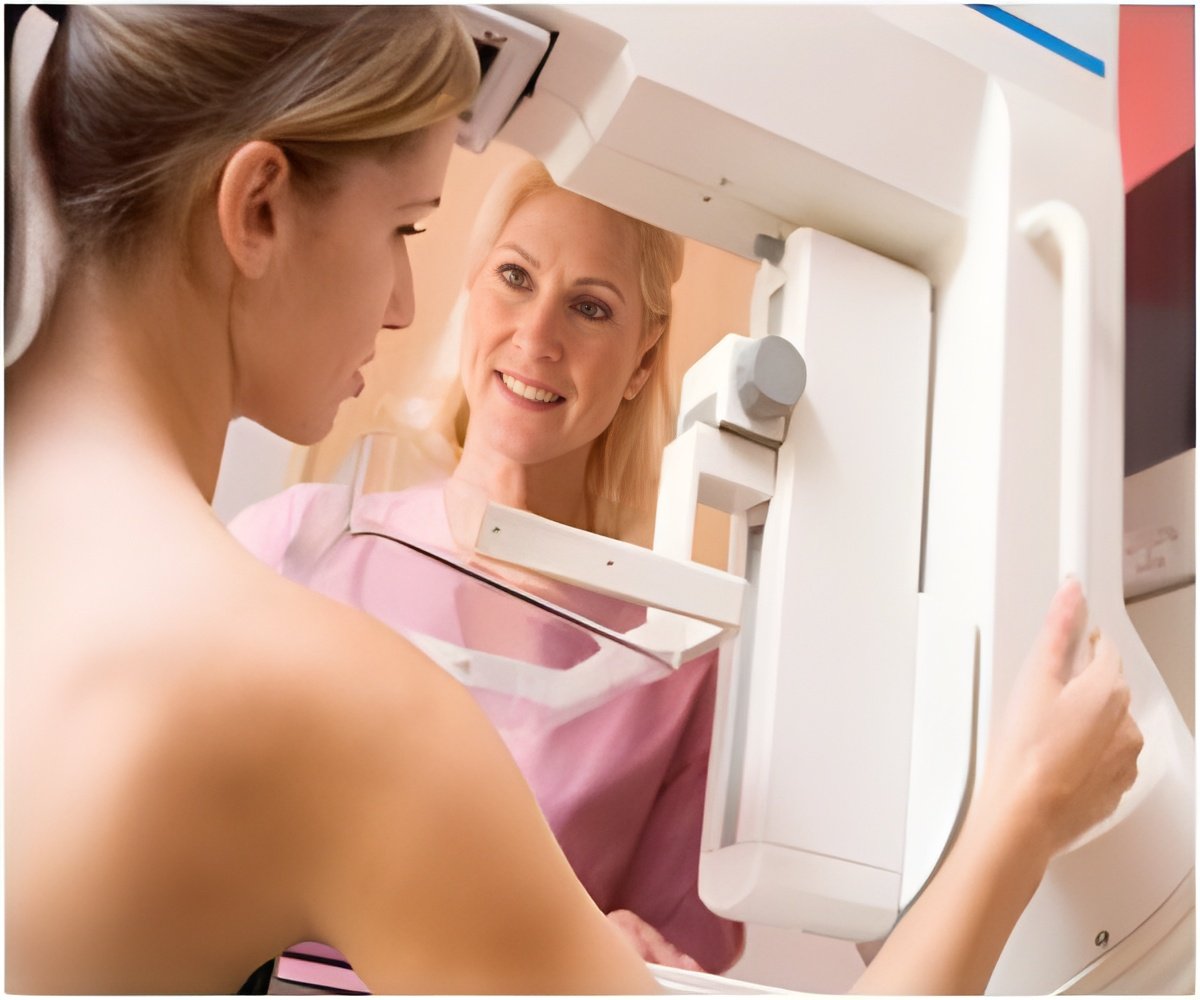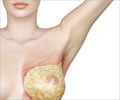
An MRI/NIRS may offer specific advantages to women with dense breasts, who are more likely to develop and die from breast cancer. A dense breast is harder for a radiologist to "see through" when using traditional imaging equipment, which lacks the sensitivity to penetrate the dense tissue. Standard breast screening is effective 77-97 percent of the time in a normal breast, but when a breast is dense precision falls to 63-89 percent.
Prior approaches for MRI/NIRS used parallel plates and relied on custom breast molds for each patient. Biomedical engineers from the Thayer School of Engineering at Dartmouth developed a new, more flexible, convenient, and comfortable approach. They designed a set of eight light transmitting cables that can be adjusted to surround the breast with light tension. A woman lies on her stomach and the breast hangs pendant through the holes of the MRI/NIRS breast coil. The procedure is nearly identical to clinical MRI.
Eight women participated in a trial of the new design. "We found that the new interface allowed us to target lesions more effectively than ever before, said Michael Mastanduno, corresponding author of the study. "Set up time was faster and images were of higher quality."
The Dartmouth MRI/NIRS offers increased coverage of the chest, giving providers improved visibility for " hard to see" areas, such as the outside area of the breast near the armpit.
"This work is a huge improvement on previous designs of MRI/NIRS systems. All breast sizes and lesion locations can now be effectively imaged. Though there is more work to be done, this technology is promising for improving MRI's ability to distinguish cancer from benign abnormalities," said Mastanduno.
Advertisement
Source-Eurekalert










